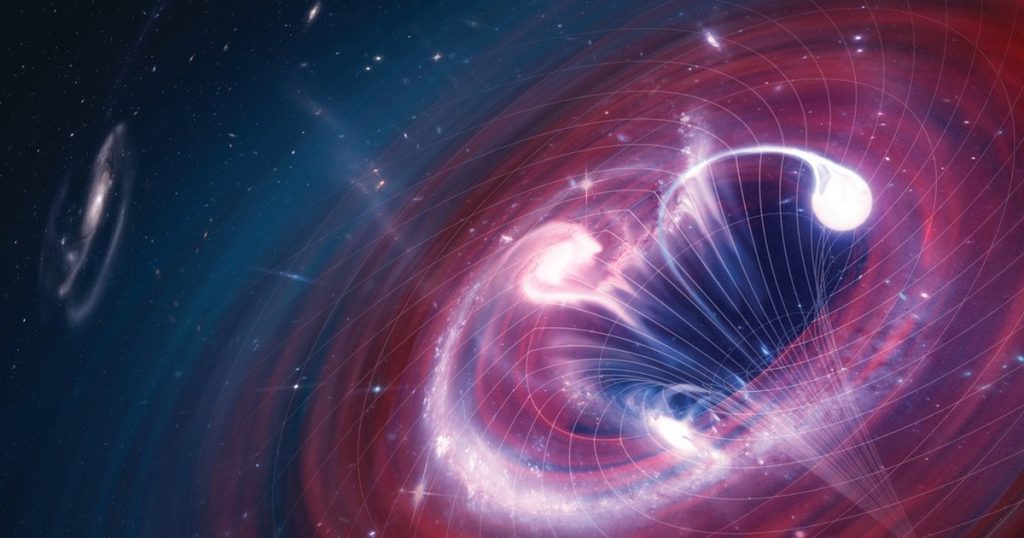advertisements
In space, no one can hear you screaming, but that doesn’t stop space from yelling at you.
A common misconception is that there are no sounds in space.
This is because most of space is in a vacuum, which means that sound cannot propagate, but it does not prevent interstellar objects and cosmic objects from making noise.
The results can be frightening, haunting, beautiful, and even slightly frightening.
Take Saturn, for example, one of the most amazing planets in our solar system due to its epic rings and massive size.
However, it also produces one of the scariest sounds imaginable, straight from the frenetic fantasy of Event Horizon or Alien.
Video is uploading
Video is not available
Click to play Click to play
The video will start playing automatically
play now
However, black holes have remained one of the most mysterious objects in space for decades, with the first image of one of them only being taken in 2019.
NASA has now released the sound of these adorable giants of space, which is just as annoying as you’d expect from something literally devouring light itself.
What is a black hole? Black holes have the gravitational force to absorb light on their own (Image: Getty Images/iStockphoto)
A black hole is basically a gravitational mass that has the energy needed to absorb the light itself.
As reported by NASA, “A black hole is a place in space where the attraction of gravity is so strong that not even light can escape from it. Gravity is very strong because matter is compressed into a small space.”
“It can happen when a star dies. Because there is no light that can go out, black holes cannot be seen by humans. You are invisible.”
Space telescopes equipped with special instruments can help find black holes. Special instruments can see how stars very close to black holes behave differently from other stars.”
What does a black hole sound like? Scientists are still trying to understand black holes (Image: Getty Images/iStockphoto)
NASA has known the sound made by black holes since 2003 – specifically those at the center of the Perseus Cluster of galaxies.
As NASA explained: “Astronomers have discovered that pressure waves emitted by the black hole cause ripples in the cluster’s hot gas that can be translated into a tone—a tone that humans cannot hear at about 57 octaves below average C.”
The space agency used new sonication (translating astronomical data into sound) to remix the new black hole noise for us to hear.
NASA has released a remix of the black hole sound (Image: Future Publishing via Getty Images)
NASA explains: “The signals in the human auditory range were then recreated by raising them 57 and 58 octaves above the true pitch.
Another way to say it is that it hears 144 quadrillion and 288 quadrillion times higher than its original frequency. (One quadrillion equals 1,000,000,000,000,000)”.
You can watch the full audio in the video linked above here.
What lies beyond the event horizon of a black hole? Supermassive black holes are getting more massive as they swallow matter and radiation (Image: Getty Images/Science Photo Library RF)
The event horizon is the region beyond the black hole’s escape velocity – the speed required to escape the cosmic vortex.
Therefore, the event horizon is the minimum around a black hole where the escape velocity exceeds the rest of the light.
Long story short, you won’t want to be around.
The truth is, no one knows what’s behind it, but it hasn’t stopped scientists from putting the evidence together.
As stated in Albert Einstein’s special theory of relativity, nothing can travel faster than the speed of light, so the event horizon is the point from which nothing can return.
Speaking to Space.com, Avi Loeb, professor of astronomy at Harvard University, said: “The event horizon is the ultimate prison wall — you can get in, but you can never get out.
“The event horizon protects us from unknown physics near the singularity.”
Read more related articles Read more related articles
advertisements




More Stories
Nvidia GeForce RTX 4090: AIDA64 gets Ada spearhead support
Rogue Trader – Details about the first cRPG in the series – CD-Action
t3n – Digital Pioneers | digital business magazine